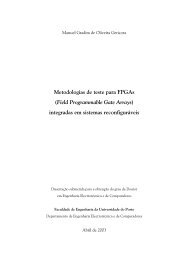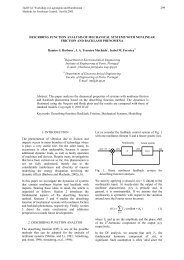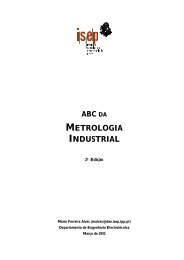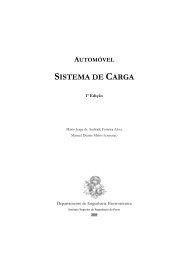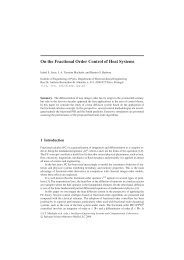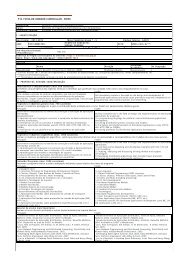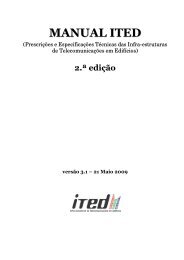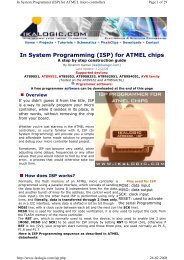AUTOMOTIVE ELECTRICAL CIRCUITS AND WIRING
AUTOMOTIVE ELECTRICAL CIRCUITS AND WIRING
AUTOMOTIVE ELECTRICAL CIRCUITS AND WIRING
You also want an ePaper? Increase the reach of your titles
YUMPU automatically turns print PDFs into web optimized ePapers that Google loves.
MECHANICAL SPEEDOMETERS <strong>AND</strong> TACHOMETERS<br />
Both the mechanical speedometer and the tachometer consist of a permanent magnet<br />
that is rotated by a flexible shaft. Surrounding the rotating magnet is a metal cup that is<br />
attached to the indicating needle. The revolving magnetic field exerts a pull on the cup<br />
that forces it to rotate. The rotation of the cup is countered by a calibrated hairspring.<br />
The influence of the hairspring and the rotating magnetic field on the cup produces<br />
accurate readings by the attached needle. The flexible shaft consists of a flexible outer<br />
casing that is made of either steel or plastic and an inner drive core that is made of<br />
wire-wound spring steel. Both ends of the core are molded square, so they can fit into<br />
the driving member at one end and the driven member at the other end and can<br />
transmit torque.<br />
Gears on the transmission output shaft turn the flexible shaft that drives the<br />
speedometer. This shaft is referred to as the speedometer cable. A gear on the ignition<br />
distributor shaft turns the flexible shaft that drives the tachometer. This shaft is<br />
referred to as the tachometer cable.<br />
The odometer of the mechanical speedometer is driven by a series of gears that<br />
originate at a spiral gear on the input shaft. The odometer consists of a series of drums<br />
with digits printed on the outer circumference that range from zero to nine. The drums<br />
are geared to each other so that each time the one furthest to the right makes one<br />
revolution, it will cause the one to its immediate left to advance one digit. The second<br />
to the right then will advance the drum to its immediate left one digit for every<br />
revolution it makes. This sequence continues to the left through the entire series of<br />
drums. The odometer usually contains six digits to record 99,999.9 miles or<br />
kilometers. However, models with trip odometers do not record tenths, thereby contain<br />
only five digits. When the odometer reaches its highest value, it will automatically<br />
reset to zero. Newer vehicles incorporate a small dye pad in the odometer to color the<br />
drum of its highest digit to indicate the total mileage is in excess of the capability of<br />
the odometer.<br />
Electric Speedometers and Tachometers<br />
The electric speedometer and tachometer use a mechanically driven permanent magnet<br />
generator to supply power to a small electric motor (fig. 2-84). The electric motor then<br />
is used to rotate the input shaft of the speedometer or tachometer. The voltage from the<br />
generator will increase proportionally with speed, and speed will likewise increase<br />
proportionally with voltage enabling the gauges to indicate speed.<br />
The signal generator for the speedometer is usually driven by the transmission output<br />
shaft through gears. The signal generator for the tachometer usually is driven by the<br />
distributor through a power takeoff on gasoline engines. When the tachometer is used<br />
with a diesel engine, a special power takeoff provision is made, usually on the<br />
camshaft drive.<br />
<strong>AUTOMOTIVE</strong> <strong>ELECTRICAL</strong> <strong>CIRCUITS</strong> <strong>AND</strong> <strong>WIRING</strong> 94/ 101



